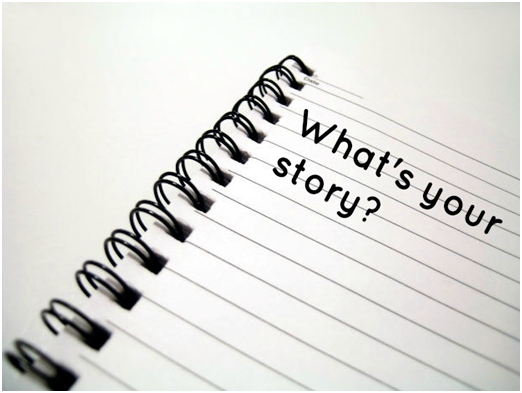Defining the Target Audience
Q: How would you define the target audience?
A: We start with a process that looks at your values. We think it’s important to find out what you believe in and what you stand for, because that’s what forms communities. If we can understand your values, we can easily understand what you think of your audiences’ values are as well. There’s a great book called ” Story Wars”, by Jonah Sachs, that builds on Joseph Campbell’s work about the power of myth and it is very relevant to the marketing world. It’s very aligned with our philosophy about values.
See the full interview with Susan McLennan below:
Q: Can you now tell us a little bit about what brand storytelling is? Why is it so important?
A: Stories really resonate with us and they are how we learn what works and what doesn’t in the world. Before we could make sense of the world, our brains were learning stories. People value what they discover more than what you tell them. In storytelling, you’re engaging the brain and you have an opportunity to co-create. Brand storytelling is about giving people the opportunity to co-create and discover.
Q: Is this a new concept, a new way of marketing?
A: I think with social media, people have been looking for more authentic communication because they realize the old ways of pushing information no longer work. Smarter brands have moved in that direction already.
Q: So, do you think values evolve and become born into the brand? Is there a difference between personal values and brand values?
A: It depends on the company, on the size, and how long it’s been around, because all businessess are a collection of people and they get into trouble if they think of themselves as one legal person. A business’s values will evolve overtime and will be determined by the circumstances. So, for instance, Coca Cola has human rights issues but at the same time they’re a leader in the black civil rights movement initiative. They took a stand, but that doesn’t mean they don’t have many other challenges. Brand values are determined by who’s at the top as well – values remain the same, but you will definitely see them evolve. Take the Apple example with Jobs and Cook – Cook is making definitive human rights statements because this is what he, an openly gay man, stands for. So, if a company is true to itself, it recognizes that we are a collection of people and those values must be infused into the organization, sometimes even from the bottom up.
Q: When it comes to businesses that are just starting out, obviously many of the startups around the world have strong beliefs and are inspired by people like Steve Jobs, but a lot of them don’t fully understand what their customers believe in. Do you have any tips on how they can go about finding that out?
A: I think they have to worry about values and a good way to go about it is to just ask. Surveys work well, or sending out a list of attributes and values and asking which matter most to their customers and which they see in the company. Never be afraid to ask your customers anything. In my world, people really value the opportunity to be part of your growth. If you don’t have customers yet, decide on who you want to be your customer.
Q: Do you think social justice is important for businesses today? Has it been important for a long time?
A: I think it used to be a marketing tool, but eventually we realized we spend a lot of time at work, so it has to be meaningful. I couldn’t sell something if I didn’t think it was worth believing in. So, we can’t take clients on and try to work with them without believing in our own product. I think young entrepreneurs get that, they’ve been raised with a sense of idealism – if you’re going to do something, do something with meaning and worth.
Q: When you're defining your audience, how many attributes do you think a business should be looking at?
A: We don’t work on attributes as much as we work on values. We look at the top 3, sometimes 4 or 5 values and they’re always associated with archetypes. We let the values choose the archetypes and from those archetypes you can build a very well-rounded brand character.
Q: Can you give us an example of how you’ve taken an archetype and used it to build a marketing strategy?
A: We did some work with a tech entrepreneur with billions of dollar worth of products. His values really influenced his life. From a child he believed strongly in the freedom of expression, so everything he’s done has been about that. When we had him choose his values, we discovered that his attributes included having fun at everything he did. Being a rebel mattered as well, and we found a playful archetype. His whole method was to use comedy to let people discover something. We build his brand in a way that he can get away with being funny. This particular brand is Just10, which is one of his brands. His name is Frederick Ghahramani and he’s a wonderful man. We did a very fun campaign for Just10 where we wrote the script for and created a video that can be found on their Facebook page and YouTube channel.
Q: Going back to the example of how defining a client’s archetype helps you address marketing, it sounds like finding out what the founder/CEO is like and what he believes in is very important.
A: Yes, we do a lot of work on the origin story. Lots of times people don’t know why they do what they do and we try to help them understand better. For example, when I was a kid, my dad ran one of the best amusement parks in Canada, so we got to meet a lot of influential people. Then, there was a terrible scandal and when I was 12, there was media camped in front of my door, making accusations about my father and his team. I had to go to school with our names on the front pages of the newspapers and our shame was brought into my school as well. In the end, my dad was exonerated, but it was a horrible thing to completely lose your voice and have your story told by someone else, so at this time I vowed that this would never happen to me. This is why I do what I do, it’s a calling to me. So, there’s usually something that happened to you that you need to do something about, and your worst day is often your best story.
Q: Is there a process to discover the origin story?
A: Yes, in fact I’m doing an online class about all of those things right now. We love doing startup work, we just can’t always do it, so we created something that can help them.
Q: So, how can entrepreneurs join your class?
A: The best way is to go to our website and join our newsletter. In the upcoming 2-3 months I’m hoping we’ll be able to launch it, we’re trying to make it a priority. I do workshops as well where I go to companies and help people come to that place.
Q: So, what is step one – the origin story? And then you discover the values?
A: It depends – sometimes people have a clear sense of their origin story, sometimes they don’t. We look at the individual and then we decide how to go about it. We ask them to think about what they really stand for and who they are.
Q: Can you tell us what the Emmy behind you is about?
A: There’s one in my husband’s office and one in mine, and it’s connected to our business. We do two things: we write for television and we have a PR company. It makes sense because everything we do is story-driven, based on the needs of our audience and the problems we’re trying to solve. With our PR clients, we take a deep level of understanding and we infuse it through our PR efforts. For example, a group of scientists were concerned about the fact that girls weren’t engaged with science after a certain age, so they asked us to create a TV show that speaks to those girls specifically. It airs throughout the American Public TV Network, and during the recent Emmy awards we were awarded a regional Emmy for the show – Best Special and Outstanding Song. The show is called Scientastic.
For more information: www.reimaginepr.com









